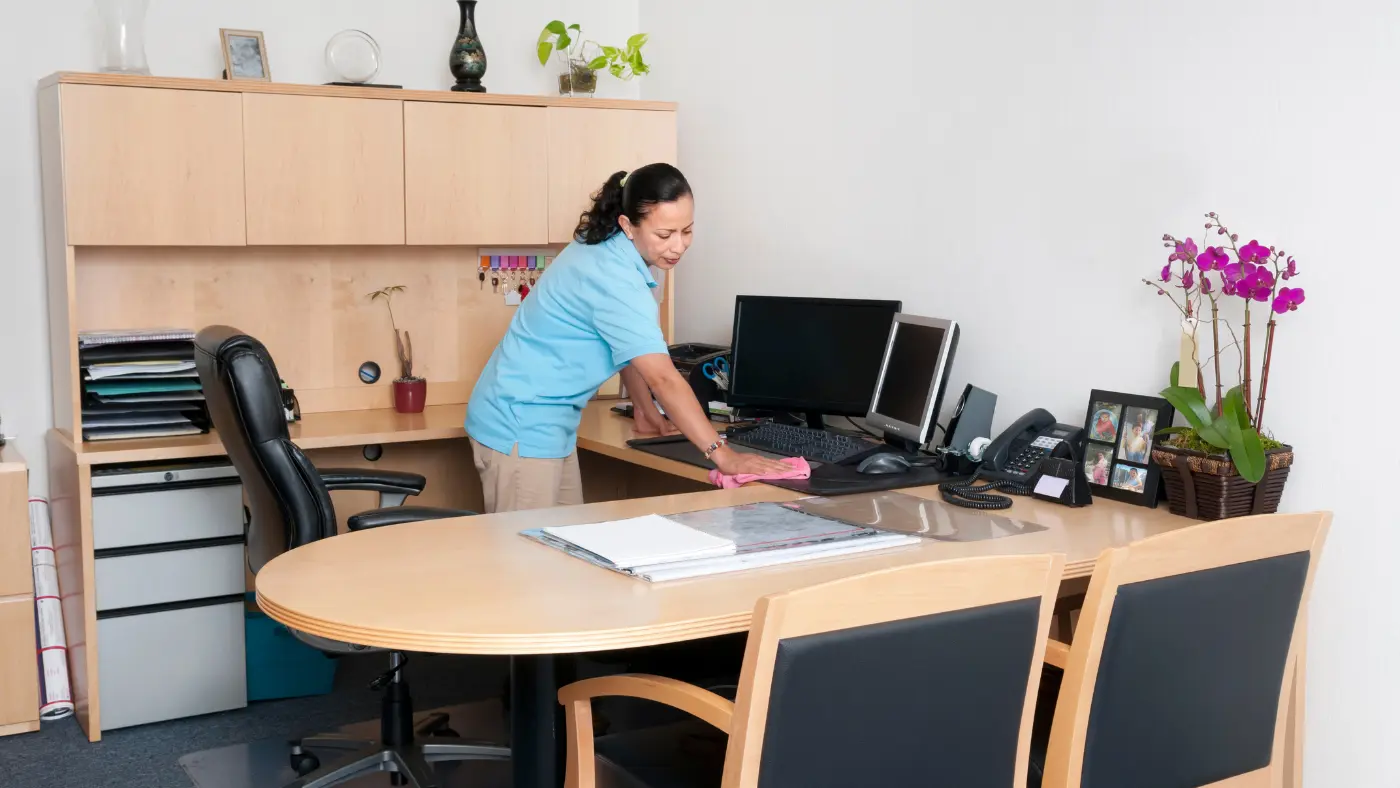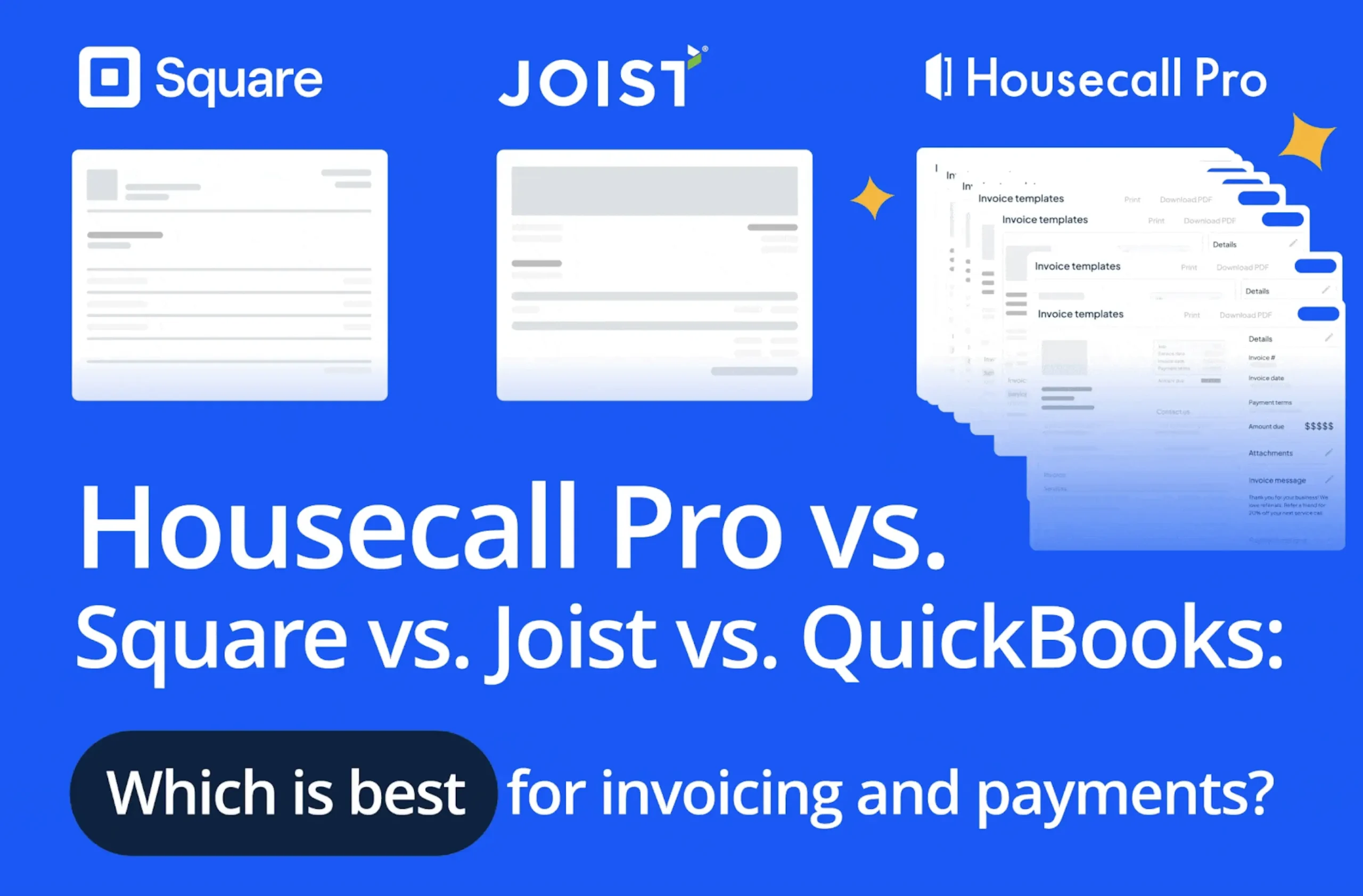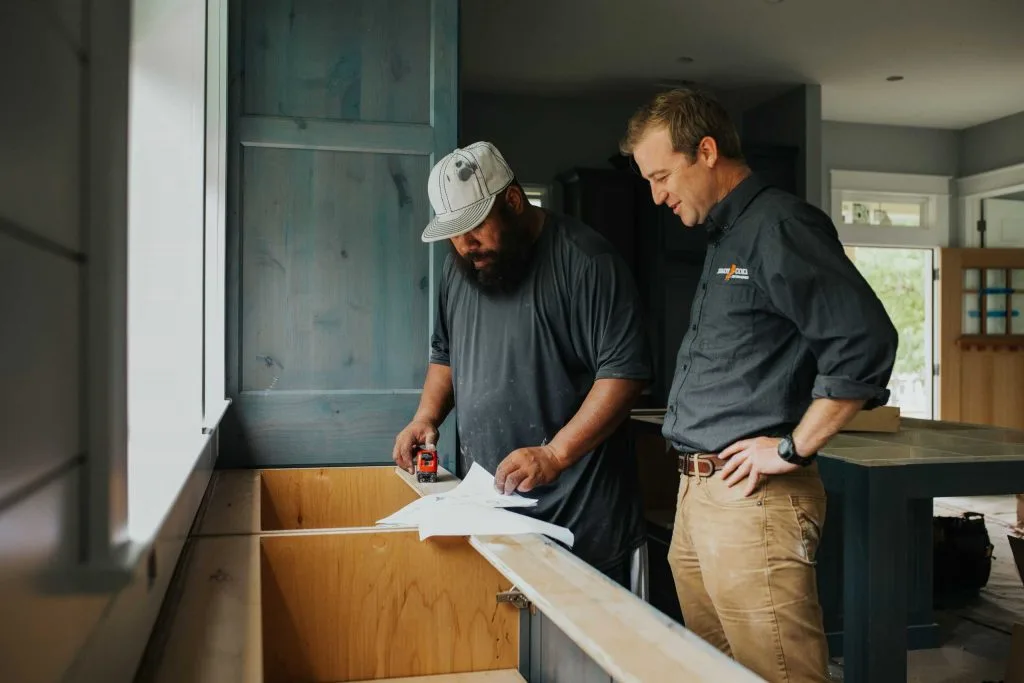
Proper pricing plays an important role in making your commercial cleaning business profitable. It can help you build a regular client base and add value to your cleaning services.
Building a healthy profit margin with fair and competitive pricing can give you the financial confidence to reinvest in your business’ growth — whether through service expansion or improved marketing. The result? A sustainable and scalable business that doesn’t just break even but flourishes even in the face of economic uncertainty.
The question of how to price commercial cleaning jobs can seem tough to crack but don’t worry. In this step-by-step guide, you’ll learn how much to charge for commercial cleaning services.
How to Price Commercial Cleaning Jobs Profitably?
- 1. Assess Job Details
- 2. Calculate Labor Costs
- 3. Determine Pricing Structure
- 4. Factor in Overhead Costs Plus Desired Profit Margin
- 5. Create a Detailed Cleaning Quote
- How Much to Charge for Commercial Cleaning Services Pricing Chart
- Common Commercial Cleaning Services List
- Factors Affecting Commercial Cleaning Rates
- Streamline Pricing Commercial Cleaning Jobs With Business Software
1. Assess Job Details
Pricing a commercial cleaning job warrants a visit to the project site to learn about its size, layout, condition, and the extent of cleaning it requires. For instance, if your site is a neglected 5,000-square-foot warehouse, you’ll need more time, effort, and resources to clean it than a well-maintained office of the same size.
You’ll also need to consider the type of cleaning the site requires — whether it needs extensive deep cleaning, routine general cleaning, or a specialized service like waxing or disinfection.
Lastly, you’ll need to assess if the client has special requests that would affect your quote, such as using eco-friendly products or special cleaning schedules, e.g., after-hour cleanups. The frequency of your cleaning services — daily, weekly, or monthly — will also affect the pricing estimate.
2. Calculate Labor Costs
Labor costs account for a major portion of your pricing structure. As such, you must calculate the total hours you and your team spend working on a site. You’ll also need to consider the cleaning task’s complexity and the cleaning site’s size.
We recommend using data from previous similar jobs as a frame of reference when estimating labor costs. For example, if it used to take four to six hours to clean a 10,000-square-foot facility, your current deep-cleaning requirement for a similar-sized space could take nearly 10 hours.
You must also account for each employee’s hourly wage, which includes expenses like taxes, benefits, and insurance. For example, if an employee’s hourly wage is $15, the total cost with overheads will be $18. This can help you establish a baseline estimate of labor costs.
A smart approach for arriving at final labor rates is multiplying your direct labor cost by at least 2.5 times. This guarantees you account for overhead costs and avoid underpricing, resulting in a more sustainable pricing structure and good profit margin.
3. Determine Pricing Structure
Choosing the right pricing structure for your commercial cleaning business will help boost your competitive advantage while still meeting your profitability goals. You can choose from various pricing structures, including:
- Pricing by the hour: Based on the specialization or the complexity of cleaning, you can charge between $50 to $100 for every hour
- Pricing per square foot: General cleaning rates range between $0.07 to $0.15 per square foot but can increase depending on the type of cleaning
- Flat fee rate: Charge a fixed fee for a specific scope of work, such as deep cleaning or disinfection, regardless of time spent cleaning. This is ideal for regular cleaning contracts, such as monthly office cleaning.
Ensure your pricing model doesn’t include rates for specialized services, such as carpet cleaning and window washing. These services should have a separate pricing structure, such as a per-square-foot or hourly charge.
Adopting a one-size-fits-all pricing approach is not always the best option, especially if you have a diverse clientele. Instead, you can provide tiered pricing options for your clients, allowing them to select from various basic, mid-range, and premium cleaning services.
4. Factor in Overhead Costs Plus Desired Profit Margin
Accounting for overhead costs like cleaning supplies, employee insurance, and equipment upkeep is the simplest way to ensure profitability and stay in business for years. You can use this simple formula to calculate your total baseline cost first:
Total Cost = Overhead Cost + Labor Cost x (1+Desired Profit Margin)
For example, if your total cost per hour is $45 ($25 overhead + $20 labor cost), you should factor in a profit margin of 20-30%. Assuming a 25% desired profit margin on the cost of $45, the total cost as per the formula would be as follows:
Total Cost = $45 x (1 + 0.25), i.e. $45 x 1.25, which amounts to $56.25
In addition to the overheads and labor costs, you would profit by $11.25 per hour at a 25% margin.
5. Create a Detailed Cleaning Quote
As a professional commercial cleaning business, you should offer your client a detailed cleaning quote. Ensure you give a detailed breakdown of all quoted prices, whether the square footage cost or extra services and other client requests. You should include terms and conditions in your quote, such as payment schedules and cancellation costs.
Being upfront with pricing and providing structured quotes will reassure clients about your services and their value while building trust. It also prevents future misunderstandings and sets clear expectations, encouraging the client to use your services again.
How Much to Charge for Commercial Cleaning Services Pricing Chart
Here’s how to price a commercial cleaning job:
| Service Type | Per Square Foot | Hourly Rates | Flat Rate Fee | Task-based Pricing |
| Standard Office Cleaning | $0.08 – $0.20 | $30 – $50/hr | Varies by contract | $150 – $400 per task |
| Carpet Cleaning | $0.08 – $0.20 | $25 – $90/hr | $115 – $259 | $33 – $55 per room |
| Window Cleaning | $0.50 – $2.50 | N/A | $100 – $500 | $45 – $270 per floor |
| Stripping & Waxing Floors | $0.30 – $0.60 | $30 – $60/hr | $300 – $800 | $200 – $500 per floor |
| Disinfection Services | $0.09 – $0.38 | $30 – $80/hr | $200 – $600 | $100 – $400 per task |
| Medical Facility Cleaning | $0.15 – $0.40 | $40 – $100/hr | $500 – $2000 | $150 – $800 per task |
Pricing Per Square Foot
When cleaning warehouses, office buildings, and other large commercial spaces, it makes sense to charge per square foot. Large facilities have consistent and predictable cleaning needs, making per-square-foot pricing easier for cost comparison.
Cleaning large spaces with predefined cleaning needs also presents fewer logistical challenges, allowing you to manage labor and material expenses more efficiently.
Hourly Rate
Some smaller cleaning jobs have unpredictable and complex cleaning requirements. When you can’t estimate how long it will take to execute such jobs, hourly pricing is better. It helps you to account for variances in the time needed to complete the task.
For instance, if you charge $25 per hour and the job takes four hours, the total cost would be $100. This method ensures fair pricing for you and your client, but you must carefully track the time spent to maintain profitability and transparency.
Flat Rate Fee
Quoting a flat rate fee or a fixed price is the best approach for repeat clients or services with a well-defined cleaning scope. Flat fees benefit both your company and the client by simplifying budgeting.
That said, you must establish fair and precise pricing at the outset. You may incur losses if you misjudge the time or resources required for such jobs. To arrive at an agreeable rate, assess the cleaning space, your client’s needs, and the time needed to complete the task.
Task-Based Pricing
Clients understand exactly what they’re paying for with task-based pricing, whether it is window washing or carpet cleaning. It is an ideal strategy for pricing specialty services that do not fit into typical cleaning silos. Clients often choose such services as an add-on to their regular cleaning, and itemized billing for these tasks clarifies costs while increasing your company’s profitability.
Custom Pricing
Clients’ requests for cleaning services can vary greatly, and your price should reflect these differences. Some facilities, including manufacturing plants and hospitals, have complex cleaning needs, such as disinfection or OSHA-compliant cleaning.
They may request custom cleaning schedules, such as bimonthly deep cleaning and weekly light cleaning. A custom cleaning contract can help cover such specific needs more effectively, ensuring win-win pricing all around.
Common Commercial Cleaning Services List
- Office Cleaning: Standard cleaning of workplace areas, such as weekly dusting, vacuuming, and daily trash removal
- Janitorial Services: Overall building maintenance and sanitation of restroom and common areas
- Carpet Cleaning: Deep cleaning of carpets to remove dust, dirt, and allergens
- Window Cleaning: Washing and polishing interior and exterior windows until they are clear and streak-free
- Disinfection Services: Using specialized disinfectants to rid floors and surfaces of harmful pathogens
- Floor Care: Restorative floor maintenance by stripping old floors, deep cleaning, and adding a new layer of protective wax
- Post-Construction Cleaning: Removal of dust, debris, and post-renovation residue to prepare for occupancy
- Medical Facility Cleaning: Rigorous, healthcare-compliant cleaning to prevent infections and maintain a safe environment
Get In Touch: 858-842-5746
Let us earn your trust
On average, Pros increase monthly revenue generated through Housecall Pro by 50% after their first year.
See plan options and feature breakdown on our pricing page.
Factors Affecting Commercial Cleaning Rates
Consider the factors below to determine how much to charge for a commercial cleaning job:
Size of the Facility
A per-square-foot rate for vast spaces such as office buildings and industrial warehouses can help you estimate the workload and allocate overhead, labor, and material costs accordingly. For example, a per square rate of $.10 for a 10,000-square-foot space will amount to a $1,000 fee, which is both fair and profitable given the magnitude of the task.
You can also attract high-ticket clients and bulk contracts by offering competitive rates for large venues while accounting for operational costs. For places larger than 20,000 square feet, you could offer a cleaning rate of $.08 instead of your standard $.10.
Initial Condition
Consider setting higher rates for poorly kept facilities that need more than a good scrub. The higher rate covers the extra effort, labor, time, and specialized equipment needed to work on spaces requiring extensive cleaning. You can set a baseline price for standard cleaning procedures and an add-on fee, such as a 20% surcharge, for deep-cleaning neglected facilities.
Number of Cleaners Needed
Some complex and large-scale cleaning projects require hiring more cleaners than usual to ensure efficiency and manage time. You’ll need to charge higher rates to cover additional labor costs in such cases. For example, instead of your standard fee of $0.10 per square foot, you might need to charge $0.15 per square foot to clean a convention center with eight cleaners instead of four.
Wages and Benefits
How you negotiate your workers’ wages will directly affect the labor cost you include in your final pricing. Ensure to account for all expenses in your labor costs, including benefits, overtime pay, taxes, and insurance.
To maintain a healthy profit margin, you must also account for unforeseen labor costs, such as emergency staffing, employee turnover, or unexpected injuries or illnesses.
Type of Cleaning
Specialized services like carpet cleaning, shampooing, and floor waxing are expected to record a CAGR of 4.88% between 2020 and 2030. Given the efforts, skills, and equipment needed for these specialized cleaning services, they warrant higher prices than basic services such as dusting and vacuuming.
You can use these services to tier your pricing structure and offer more value to clients. Consider including these services in a premium package alongside regular cleaning services. Your clients are more likely to respond to comprehensive, value-based services than piecemeal, specialized ones.
Specific Needs
Some clients have unique requests, such as eco-friendly cleaning or hospital-grade sanitation. These cleaning services can drive up costs since they require specialized cleaning products, skills, and equipment. Adopting a bespoke pricing strategy for these requirements can be profitable while being fair to your clients.
For instance, you can use historical data to create an industry-specific checklist of unique demands, such as green cleaning for schools or OSHA-compliant cleaning for hospitals. Then, you can adjust your pricing to cover the additional costs for these services.
Regularity
Large offices, retail stores, and medical facilities often prefer regular cleaning contracts to one-time services. These contracts outline a consistent schedule and needs, allowing you to charge lower rates for these clients in exchange for a steady workflow.
For example, you could offer clients a 10% discount for a 12-month contract instead of a more expensive monthly rate. This will lead to stable revenue for your business and cost savings for your clients, fostering a mutually beneficial relationship.
Location and Supplies
The question of how much to charge for commercial cleaning services will also be driven by geographic location and cleaning material costs. In urban areas, you might have to pay higher wages and operational costs. Specialized cleaning supplies and equipment will cost you more than in low-cost areas, leading to higher overhead costs.
You can avoid these costs by working with local vendors and negotiating lower prices for cleaning materials when buying in bulk. If you save enough money through bulk discounts, you could introduce special offers to keep pricing competitive.
Local Competition
A high volume of commercial cleaning companies vying for attention in a specific area drives competition and affects pricing. To gain a competitive advantage, you may have to quote lower rates.
It’s a good idea to monitor your competitors’ prices and adjust your own accordingly. Market research can also help you decide to underprice or offer additional services/benefits to justify your pricing.
Streamline Pricing Commercial Cleaning Jobs With Business Software
From assessing the cleaning site and its condition to tailoring your costs to client needs, many factors come into play when pricing commercial cleaning jobs. You need to carefully weigh these factors and set smart pricing. That way, you’ll have a better chance of landing high-ticket work.
Housecall Pro shows you how to charge for commercial cleaning the right way. Commercial cleaning service business software takes the guesswork out of pricing and growing your business. It features:
- Intuitive estimating software to help you create accurate pricing estimates quickly without losing the big picture: your profit margin
- An easy-to-refer price book to keep things organized and customized templates for sending out estimates to clients
- Tools to help you track your job costs and gauge profitability
- Invoicing software so you never miss a payment






